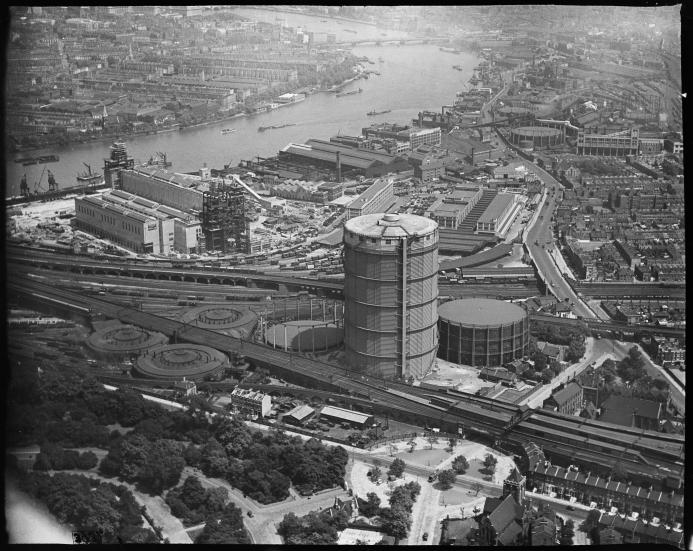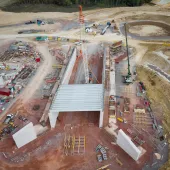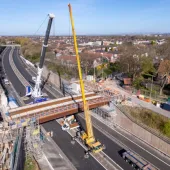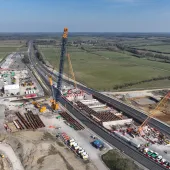Rare aerial photos show England under construction
Historic England has published a collection of 242 newly digitised aerial photographs from the 1930s, offering a unique view of England’s landmarks, industrial sites, and construction projects.
The Air Pictures Portleven Collection, captured by pioneering aerial photographer Arthur William Hobart, is now available online through Historic England's Aerial Photography Explorer.
The collection showcases black-and-white images of key national landmarks, townscapes, and major construction projects of the time, including photos of Twickenham Bridge in London, the first large three-hinged concrete arch bridge in the UK.
It also covers a wide range of industrial sites, such as Battersea Power Station and Smith's Docks in North Tyneside, as well as popular seaside resorts and sports grounds.
In addition to sites in London, the collection includes locations across England, such as Cumbria, Lancashire, Staffordshire, Tyne and Wear, and Yorkshire. These images reflect the diverse nature of the interwar period's construction and development boom, capturing everything from new housing estates to major national infrastructure.
Duncan Wilson, chief executive of Historic England, highlighted the significance of these photos: "Flicking through these photos lets you take flight over 1930s England, to see the changing face of the country in the interwar period. Many of us will not have seen so many well-known landmarks and sites from this fresh perspective provided by aerial photography."
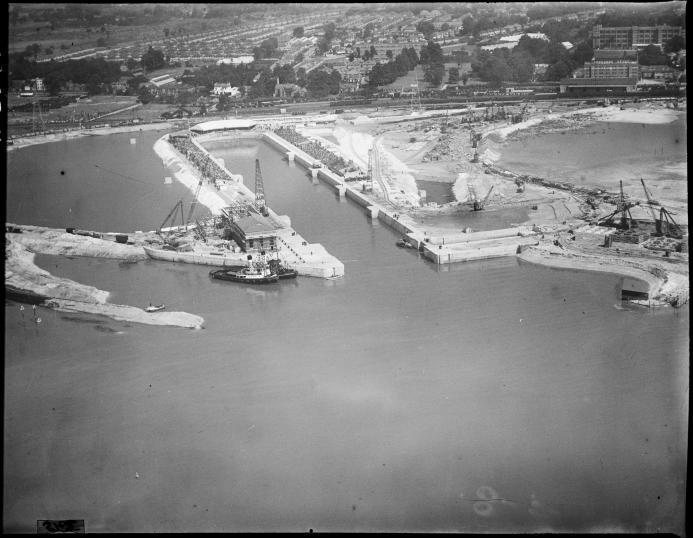
The collection also reflects the business side of Hobart’s work, with many images taken for postcards, municipal authorities, and the press. Hobart’s aerial photographs were often commissioned or taken speculatively, capturing the growing demand for aerial imagery in construction and industry.
This archive provides insight into how this young aerial photography industry evolved after the First World War, supporting sectors like construction by documenting new infrastructure developments from the air.
The Portleven Collection is part of a larger body of Hobart’s work, thought to include around 10,000 images. Hobart, who started his career as an aerial photographer in the 1920s, has left a significant yet largely undiscovered legacy. His photographs provide a unique window into the developments and challenges of the 1930s.
The release of this collection is part of Historic England’s broader effort to digitise and expand its Aerial Photography Explorer platform, which now contains over 480,000 images spanning from 1919 to the present day. This tool offers the public digital access to aerial images of nearly 30% of England, allowing users to explore how urban and rural landscapes have changed over the past century.
With around six million aerial images in the Historic England Archive, the organisation plans to continue expanding the platform to provide further insights into the UK's historical and ongoing infrastructure developments.
